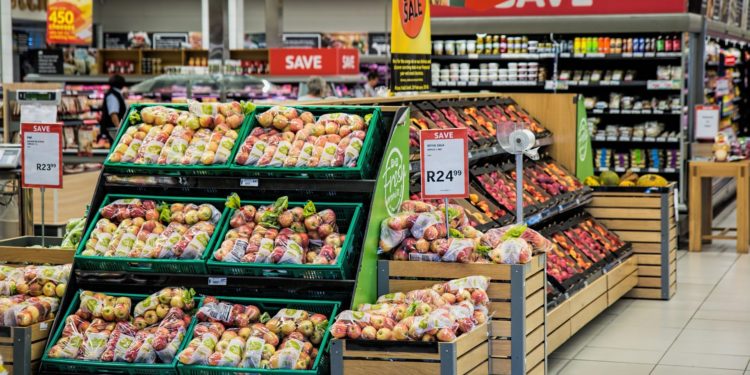Technology and other digital trends have changed the way we conduct business today. Various industries have adopted technological changes and reshaped their methods of business to serve their purpose better. Enterprises have embraced technology as an integral part of the sector because of fast-paced services and increased competition. Amid all the business sectors, the retail industry has also gained much success by implementing digital and technological changes. Retail is a cutthroat industry where success depends on a better performance than competitors. To stay ahead in the game, retail managers use technology for better results. Having familiarity with retail technology is a factor that every retail expert needs for best interests. Whether they work behind the desk or on the sales floor, technological expertise gives them an edge over others.
Technology in Retail
With the advancement of technology, the retail sector has also experienced a global revolution. Thanks to various digital platforms and other augmentations, retail businesses have also enjoyed successful changes. High-tech innovations have guided retailers in staying ahead with factors like price, size, speed, and convenience. Various technological tools help balancing inventories, order management, and tracking expenses on the sales floor and retail stores. These tools increase customer satisfaction and promote brand loyalty by enhancing the shopper experience. At the management and executive level, tools help in making improved decisions and planning. Data mining software help make stocks market findings and execute pricing as well as product designing and development.
Here are some prominent aspects that show technology has revolutionized the retail industry significantly.
Inventory Management
The retail industry is all about managing inventory to cater to demand and supply for customers. With the implementation of technological innovations, inventory tracking and management have become convenient for retailers. Implementations like Electronic Data Interchange (EDI) provide direct transactions form stores to vendors database. Similarly, through barcode readers and RFID units, inventory analysis takes the inventory and downloads straight to retail headquarters. Virtual shelves, automated replenishments, and product coding provide retailers with effective inventory management without disruptions. These implementations also help in improving communications between vendors and customers for a smoother supply activity.
Multi-Channel Retailing
When customers start to demand convenience and need their terms of shopping, retailers can no longer rely on physical centers to cater to those demands. The technology revolution has solved this problem for retailers and provided them with online shopping platforms to ease flexibility. Most retailers use both styles to offer convenience to shoppers for online purchase and in-store pickup. As customer demand for shopping convenience increases, so does the steps taken by retailers. Retailers equip their employees with easy to understand gadgets that provide quick purchase options for customers and inventory management with ease. This simple tech solution aims to make the customer happy and profit retailer by not losing a sale.
Supply Chain Management
Technology implementations have also paved the way for supply chain management procedures to become streamlined and smother. The communication improvement creates a strong channel between vendors and retailers for un-hindered supply while catering to customer demands with ease. Real-time delivery, cross-docking, and third-party logistics are the areas in the supply chain mostly influenced by technological advancement. With inventory and order tracking tools, retailers easily align the need for inventory with customers’ requirements.
Customer Service
Customer Relationship Management or CRM software helps keep track of customers while managing smooth production or processing. Some physical stores have interactive kiosks that provide customers with product details, guiding them in making an informed decision. Various tools and customer management software have provided retailers with easy interaction with customers to address their issues and complaints.
Warehousing
With sophisticated inventory management and analysis, warehousing has also become convenient for retailers. They can have the necessary inventory stored in a warehouse with quick access and dispatch features for timely deliveries. Furthermore, technological changes help reduce waste during transit while taking care of customer experience and satisfaction.
Marketing
Retailers also need some extent of marketing to increase and retain their customer base. With traditional marketing methods, retailers had a hard time in reaching specific customers and had limitations. With the introduction of the digital marketing revolution, corporates and retailers can enjoy the successful targeting of customers through customized campaigns. Digital marketing methods like PPC, SEO, content marketing, social media, etc. have allowed retailers to target customers according to demography irrespective of their location. Digital marketing techniques have proven far better than traditional marketing in terms of retailer clientele.
Friendly POS Systems
Retailer friendly POS systems have made it easy for retailer s to keep track of daily transactions and sales. They can now compare their deals with the number of inventory subtracted from the database and come with accurate sales figures. Whether physical or online, POS systems have allowed retailers to streamline their payment gateways for both handler and customer convenience.
Conclusion
Technology has influenced every area of business, and retail is one of them. With new and innovative tools, retailers find it easy to manage their supply and demand levels and keep their profits in check. The points mentioned are some of the most notable changes that technology has brought to the retail industry. With time, technological innovations bring new surprises to the retailer.


